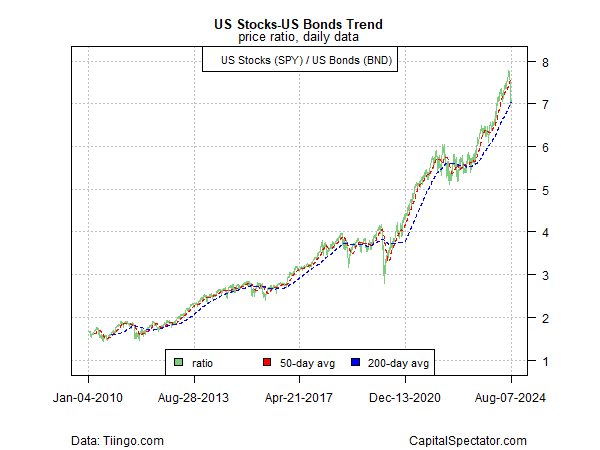U.S. approves sale of 70,000 AI chips to UAE and Saudi Arabia, WSJ reports
From the vantage of the past week of trading the case looks clear for calling recent market volatility a sign of a risk-off pivot. But if your time horizon is longer, there’s still room for debate, based on a set of ETF pairs for gauging the broad trend via prices through Aug. 7.
From the vantage of two global asset allocation ETFs, the bull trend has suffered a setback, but it’s not yet clear if this is short-term noise or a longer-term signal. The ratio of aggressive allocation (AOA) vs. conservative allocation (AOK) fell sharply in recent days, but the ratio’s 50-day average remains well above its 200-day counterpart.
Further deterioration for this ratio would put the bulls on the defensive in a more convincing degree, but at the moment there’s still a plausible, if battered, case for reserving judgment.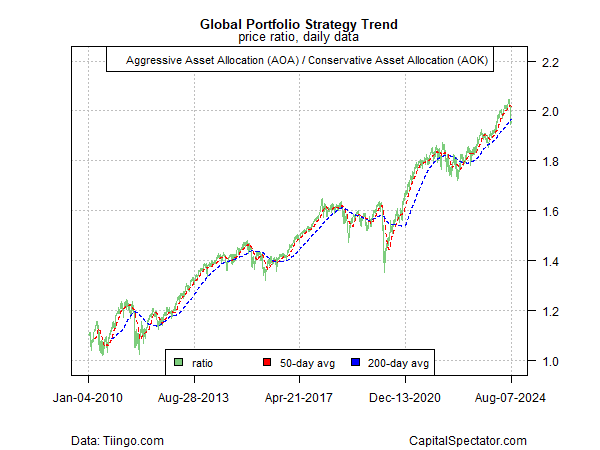
A similar profile applies to US stocks, based on the trend for a broad market proxy (SPY), vs. a low-volatility portfolio of American equities (USMV).
Ditto for the high-flying corner of semiconductor stocks relative to US shares overall (SPY).
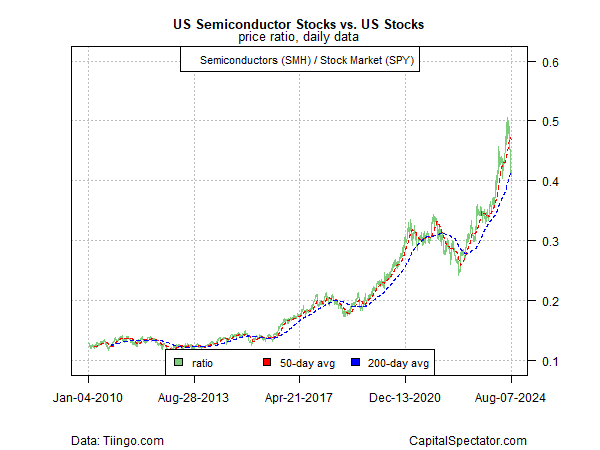
For another perspective on deciding if market sentiment has genuinely shifted, consider how the defensive utilities sector (XLU) compares against stocks overall (SPY).
This ratio tends to rise when a safe-haven bias dominates. Although there’s been movement toward that shift, it’s not yet clear that an enduring change is underway.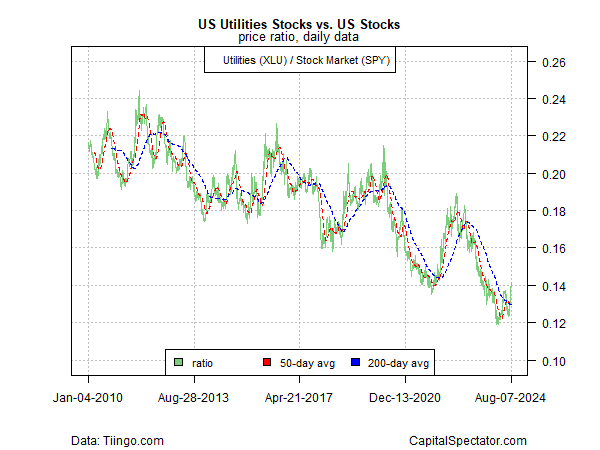
On the other hand, the ratio of medium-term Treasuries (IEF) vs. shorter-term counterparts (SHY) is more advanced in signaling a change in sentiment. To the extent this ratio is trending higher, it’s a sign that the appetite for longer maturities is rising, which tends to equate with higher confidence that the “going long” trade will be profitable, fueled by expectations for macro-related troubles ahead. On that score, the latest upturn in IEF:SHY ratio deserves close attention.
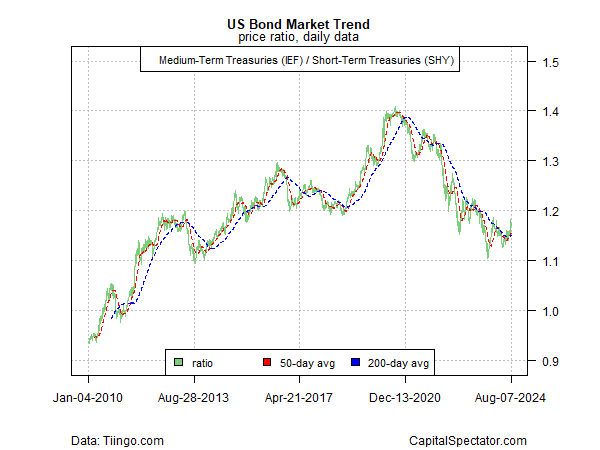
On a related note, keep an eye on the US stock-bond ratio (SPY:BND). This gauge of risk-on/risk-off sentiment has crashed in recent days on a daily basis, which is a warning sign. But for the moment the trend has only wobbled in terms of the 50-day/200-day averages. If the longer-term metric begins stumbling in the days and weeks ahead, it may be a more persuasive answer to the question we posed in early July: “Has Risk-On Run Out Of Road?”